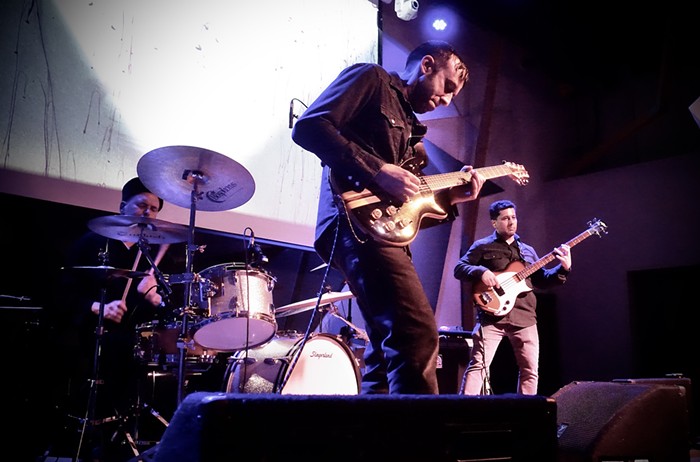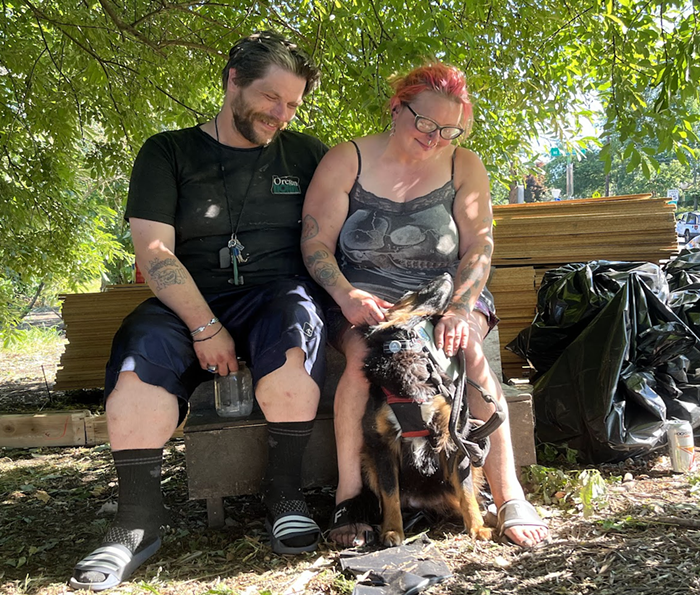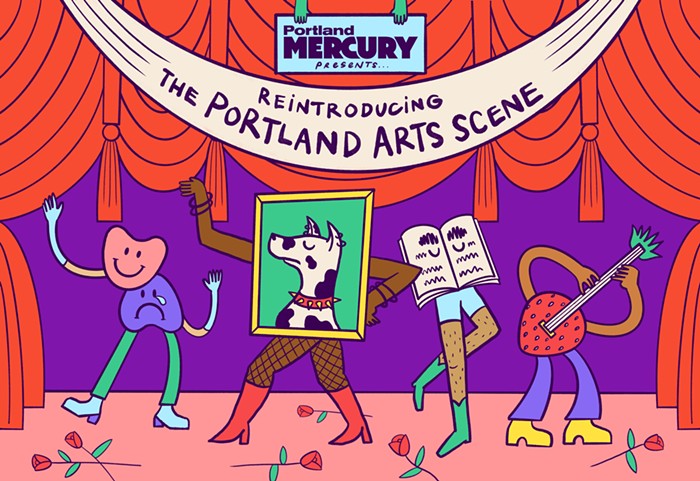
- Oregon Painting Society
- Oregon Painting Society's Hexenhouse
There are just two weekends left to check out Portland2010, the Disjecta-organized, multi-location biennial which concludes on April 25. While our local biennial spreads out through the city, and there's a whole lot offered within that loose cloud of locations, I feel that the Templeton Building (open Friday through Sunday, noon to 6 pm) is the must-see site— and if you haven't seen any of Portland2010 yet and you're even remotely interested in art, I suggest going down there this weekend, or the next, before it's all over.
The entrance to the Templeton Building is awkwardly located under the Burnside Bridge, next to the skate park. You can enter the building through a yellow door on SE 3rd Avenue (the official address is 230 E Burnside, but that won't really get you there). This building is one of Disjecta's past homes, and it's really an experience in and of itself. Where Disjecta's current central site in North Portland is white-walled and clean— pristine even— the Templeton comes directly as its juxtaposition, with a gritty warehouse vibe.
While the building is preferred, the artwork is strong too. I've chosen a few of my favorite Templeton offerings to talk about after the jump: Oregon Painting Society, Jenene Nagy, plus tons of pictures.
Back in January of this year, Jenene Nagy created Tidal at Disjecta. Nagy tells me that Tidal was an exploration of spacial constraint: Chunky sections of pink drywall appeared to grow up a structure of wooden beams, and into the ceiling, to loom over the viewer.

- Openwidepdx.com
- Jenene Nagy's Tidal
If Tidal was a thesis of spacial containment, than Nagy's Portland2010 offering is its antithesis. During build-out, I visited Nagy and she described what she was creating as "the crash" to Tidal. As with Tidal, Nagy is working with angular sections of sheetrock, though rather than conforming to the space she's working in, she's breaking through walls (literally).

- Openwidepdx.com
- Jenene Nagy's Portland2010 contribution
At varying angles and heights, sections of pink sheetrock jut through torn walls, amidst tangles of fluorescent tube lights. With great success, Nagy's installation spans several rooms in the basement of the Templeton, fitting well into the context of the housing market's collapse.
In a cleaner take on the room-large installation, Oregon Painting Society present Hexenhouse, which is a symbolic home created through repetitions of shapes, objects, and patterns— as well as the strategic placement of certain household items. Across the floor of the Templeton's upper level, rectangular piles of stones, flower petals, sand, and arcs of rope, create strips of checkerboard-pattern.

- Oregon Painting Society
- The garden from OPS's Hexenhouse
On one end of this floor installation, a small room is filled with fog, light, and sound (with a preferred vantage point on its roof), while on the other end, there's a collection of painted wooden boxes, each sharing a logo— the logo is described by Birch Cooper of Oregon Painting Society as intentionally ambiguous, suggesting a "butt-plug" or "bomb."

- Oregon Painting Society
- More Hexenhouse
These boxes are stacked into wavy walls, which not only match the shape of the ropes on the floor, but also the previous checkerboard pattern, which is rendered through the empty spaces between the stacked cubes. It's likely that I won't be the only one impressed by Hexenhouse, especially when writing this just a few weeks after the Oregon Painting Society was invited to exhibit at the Tate Modern in London (yup, that's a big fancy museum).
While Oregon Painting Society and Jenene Nagy created the biggest imprint on my experience of the Templeton's Portland2010 offerings, the other contributors shouldn't be left out: Damien Gilley's perspectival line drawings were combined with sculptural elements to flesh out not only a futuristic prison camp, but a place of liminal physicality; Holly Andres's photographs tell of a car that bursts into flames on the way to a child's birthday party, forcing the mother driving the car to rush her carload of kids to safety; John Brodie's collages are massive and intriguing; Corey Arnold captures the birds of the sea, as well as the motion of the ocean (via photos); and Pat Boas's multi-channel video installation randomly pairs up photographs of found text, in a two-frame, slide show format.
Again, there are only two weekends left to catch Portland2010, and if you haven't seen any of it yet, I suggest checking out the Templeton arm soon.
More pics:

- Openwidepdx.com
- Damien Gilley's Portland2010 contribution

- Holly Andres
- Photo by Holly Andres

- Openwidepdx.com
- Collages by John Brodie

- Openwidepdx.com
- Pat Boas's Portland2010 contribution












